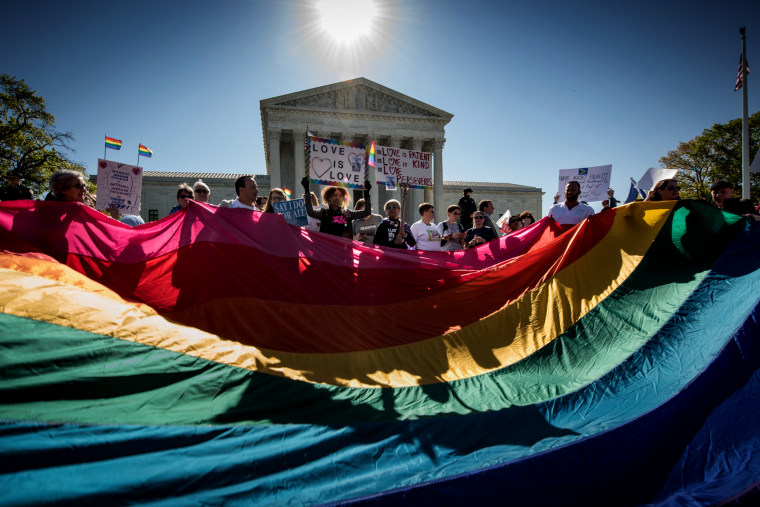ORLANDO, Fla. — Five years after the U.S. Supreme Court legalized same-sex marriages around the U.S., more than a half million households are made up of married same-sex couples, according to figures the U.S. Census Bureau released Thursday.
Since 2014, the year before the U.S. Supreme Court legalized same sex marriages, the number of married same-sex households has increased by almost 70 percent, rising to 568,110 couples in 2019, according to the Census Bureau’s American Community Survey.
Of the 980,000 same-sex couple households reported in 2019, 58 percent were married couples and 42 percent were unmarried partners, the survey showed.
There were slightly more female couple households than male couple households.
The survey revealed noticeable economic differences between male couples and female couples, as well as same-sex couples and opposite-sex couples.
Same-sex married couples had a higher median income than opposite-sex married couples, $107,210 compared to $96,932. In same-sex marriages, though, male couples earned more than female couples, $123,646 versus $87,690.
According to the survey, same-sex married households were more likely to be in the workforce than opposite-sex married households, 84.6 percent compared to 80.4 percent.
However, there was a difference between gay and lesbian couples. Married women in same-sex households were much more likely to be working than married women in opposite-sex households, but the reverse was true for married men in same-sex households. They were less likely to be working than married men in opposite-sex households, according to the Census Bureau.
Separate survey results also released Thursday show almost 15 percent of same-sex couples had at least one child under age 18, compared to 37.8 percent of opposite-sex couples. Of the nearly 300,000 children living in a homes with same-sex couples, 66 percent were children of both partners or spouses, compared to 95 percent for opposite-sex couples, according to the Census Bureau's Current Population Survey.
The District of Columbia had the greatest concentration of same-sex households, at 2.4 percent of households, followed by Delaware (1.3 percent), Oregon (1.2 percent), Massachusetts (1.2 percent) and Washington State (1.1 percent), according to the American Community Survey.
In the survey, the average age of a respondent in a same-sex marriage was 48, and the average age of the spouse was 47. Of those who responded to the survey as being in a same-sex married household, 82 percent identified as white, almost 7 percent identified themselves as Black and almost 4 percent were Asian. More than 13 percent were Hispanic.
More than 16 percent of same-sex married households were interracial couples, double the rate for opposite-sex married couples.
The U.S. had 122 million households in 2019. The number of gays and lesbian households in the U.S. is greater than 980,000 since that figure only reflected same-sex couples living together.
The 2019 American Community Survey for the first time included updated relationship categories that better captured the characteristics and number of same-sex households in the U.S. than in years past.



